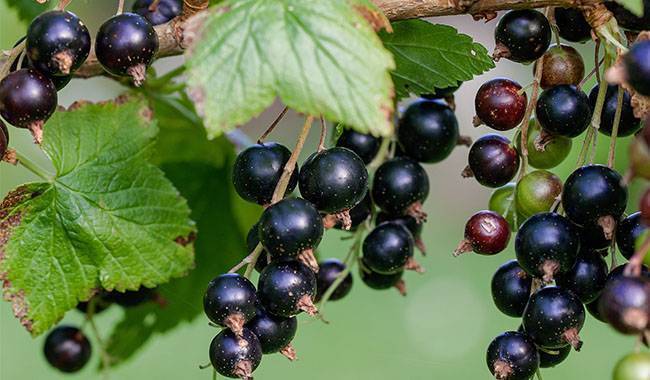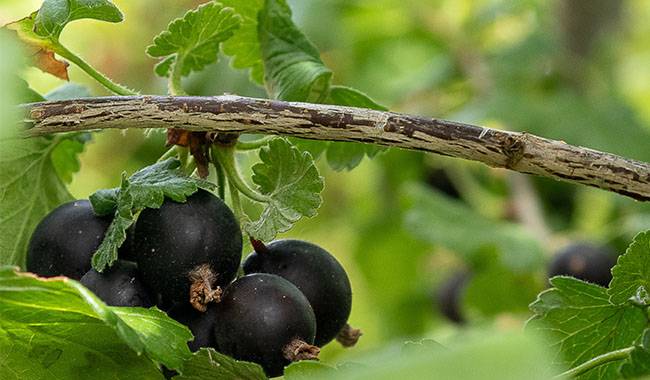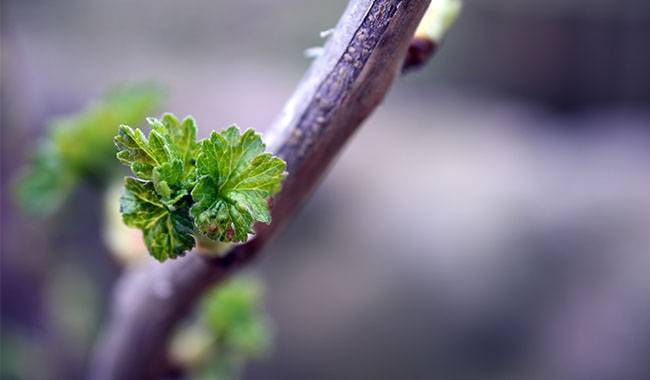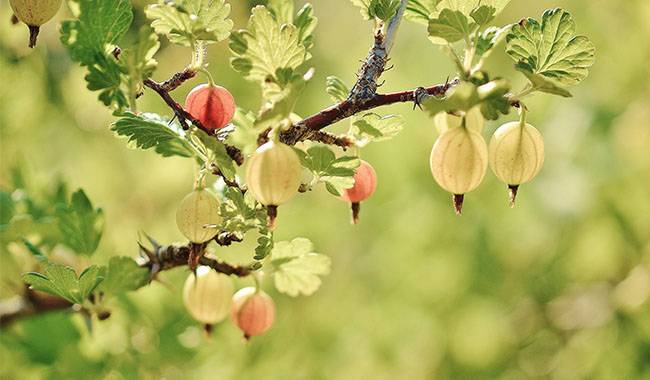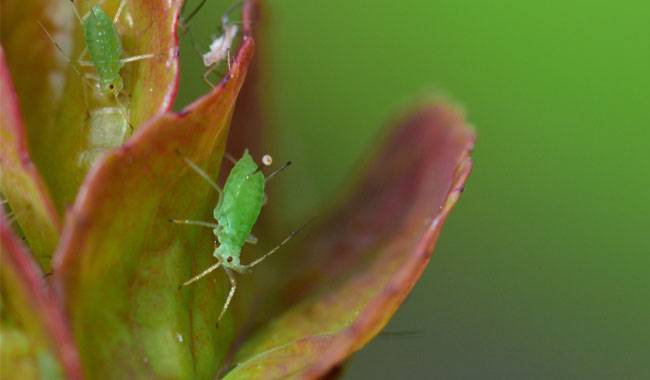
Currants are the second most distributed in industrial plantations after strawberries. This is due to a number of factors. It is frost resistant and sufficiently drought resistant, easy to propagate (simply by inserting part of the shoots into the soil), cheap planting material, plus the fact that there are many varieties and they are increasing every year.
However, currants have a large number of pests and diseases, and it becomes simply impossible to grow them without fighting them. Today we will discuss one of these pests, the Aphids. It cause considerable damage to currants, negatively affecting both the appearance and the yield of the plant.
WHAT HARM DO APHIDS DO TO CURRANTS?
First of all, Aphids mainly attack “colored” currants, i.e. red, white, maroon, and similar currents, while golden and black currants (including those with green fruits) are damaged to a much lesser extent. Apparently, this is due to the leaf structure: the leaves of the “colored” currants are more delicate and therefore easier to pierce them and suck the sap from them.
Due to the active life of Aphids, the surface of the currant’s leaves appears very unsightly lumpy or bloated, as if the currant is affected by some disease, but if you turn over the leaves underneath it, we notice insects, these are Aphids.
Aphids suck the sap from the currant leaves, causing them to become severely deformed. This insect usually chooses the young leaves of the year, which are full of vigorous sap. This means that Aphids harm not only the current year’s crop but also the next year’s crop, as new shoots stop growing and bushes do not develop, thus reducing the yield potential for the next season.
APHIDS DESCRIPTION
Aphids or redcurrant Aphids (Cryptomyzus ribs) are part of a large family of Aphids, numbering over four thousand species and distributed around the globe. Today, Aphids can be found in all places where currant plants grow.
In the absence of currant plantings or shrub foliage suitable for feeding, Aphids can inhabit cultures such as mint, sage, oregano, lavender, thyme, and brandy, which must be kept in mind and not combined with plantations of these cultures if possible.
The Gall mosquito differs little from the “familiar” Aphids, which affects not only shrubs but also trees. It is a small, egg-shaped insect, a few millimeters long, usually without wings, and pale greenish-yellow in color. If you look closely, you will notice that Aphids have small hairs on their bodies.
Four to two dozen generations of Aphids can form in a single season. The warmer the summer temperatures, the more Aphids there will be and, therefore, the more damage they will do.
One Aphids can give birth to as many as they can. One hundred or even more of its kind.
WHY ARE APHIDS CALLED “APHIDS”?
In fact, when Aphids suck the sap from currant leaves, the plant tries its best to heal the holes formed by their puncture wounds and form tissues with a growth form, the aphid, hence the name. If the Aphids are not combated, the plant may not have enough vitality to fully heal all the wounds and may even die from wilting.
Among other things, like all sucking pests, Aphids can carry a variety of viral infections that can infect the plant when puncturing currant leaves, and then even if the Aphids colony is successfully eliminated, the plant has to fight the viral infection, which is usually more difficult.
THE LIFE CYCLE OF APHIDS
The distribution of classes of Aphids is very interesting, it is a hierarchy or, more correctly from a botanical point of view, a polymorphism. Polymorphism means that different generations of Aphids can differ very strongly in phenotype and can also produce quite different actions during their lifetime.
Most interestingly, it no longer lays eggs but produces live Aphids, which means that it produces Aphids throughout the warm season. only female Aphids are born to produce the next generation.
Most Aphids are non-mating females that eat the leaf sap of currants, do not have wings, and therefore do not actually migrate (usually only within a single plant). Solitary Aphids reproduce to produce the same species.
The next group is the Aphids known as dispersers; they have fully developed wings and are activated when a group of Aphids increases to the point where another place to feed is needed, as the current plant cannot fully feed all specimens anymore. The winged Aphids then fly to the next currant plant, producing a new generation of Aphids, effectively creating a new colony.
They also have intermediate generations, such that Aphids can be male or female, without wings, but capable of sexual intercourse and not producing fully mature eggs.
Finally, there is a generation of sexual Aphids whose role is to ensure the survival of the species. They lay their eggs in a variety of places, including weeds immediately adjacent to currants, the bark of currants, and other similar places. aphids usually burrow out of these eggs.
DEVELOPMENTAL PROCESS OF APHIDS
Once Aphids have laid their eggs, they can survive for up to 250 days, sometimes longer, which is usually enough to survive a cold period. Once spring arrives and the air warms up, Aphids begin to hatch from their eggs and quickly move to nearby currant plants.
Mass reproduction of Aphids usually occurs during the flowering period of the crop. At the beginning of summer (usually early or mid-June), the leaf masses are most heavily infested with Aphids. at the end of July, when the main leaf masses of the currants become rough, the surviving specimens disperse into the above-mentioned plants, where a generation with both male and female characteristics is born. They then return to the currants to lay their eggs. It usually occurs at the end of August, sometimes in the middle of that month.
MEASURES AGAINST APHIDS
First of all, you need to pay more attention to the plant, understand the biology, which we have described very thoroughly, and pay attention more often to any changes in the quality of the leaves of the currant. If you notice even a small deformation of the leaf plate, you need to take immediate action, first by turning the leaf to determine that it is really Aphids – small red dots will be seen, these are Gall.
The first method is to expose the currant bush to hot water. To do this, bring the water to a boil and pour it over the bush as soon as possible before it gets too cold. Usually, this should be done even before the emergence of leaf masses to destroy the pest’s egg-laying sites, which would otherwise damage the leaves and, even more so, the inflorescence.
COLLECT APHIDS BY HAND
If few currant leaves are affected (literally 4-5 on each plant), then they can be ripped or cut off and burned behind the site. If a branch is affected and there are swollen tubercles on most of the leaves, the entire branch can be cut down, but the cut must be insulated with paint or garden varnish.
FOLK REMEDIES TO CONTROL APHIDS BUGS
The most common folk remedy is a decoction of tobacco powder. Usually, take 10 liters of water (even better if it is rainwater) and pour 250-350 grams of tobacco powder into it, then bring the solution to a boil, remove it from the fire, cover it tightly, and put it in a dark room for three days. After this time, you need to strain the decoction well, add a bar of antibacterial soap, mix everything well, fill the sprayer and treat the plant, as precisely as possible on the lower surface of the currant leaves.
If necessary, this treatment can be done at least throughout the warm season, alternating between 5-6 days, just don’t treat the plants during flowering to avoid damaging pollination and the first few days of harvest.
Infusion of marigolds is the second most popular means of controlling Aphids on currants. In order to obtain it, you need quite a lot of flowers – about 500 grams. You can crush the flowers of calendula in any convenient way, pour 10 liters of rainwater, and boil, then remove from the fire, cover tightly, and put in a dark room for two days.
After this, you need to add a bar of antibacterial soap to the infusion (it will act as a binder as in the first case), strain everything well, fill the sprayer and treat the affected plants, as far as possible on the lower part of the leaves. The treatment is done at the same time as the soot decoction treatment. The dose can vary depending on the number of affected leaves, as long as all of them are moistened.
Mustard was previously used, but it was decided to abandon its use because it proved to be one of the strongest allergens.
CHEMICAL CONTROL MEASURES FOR APHIDS
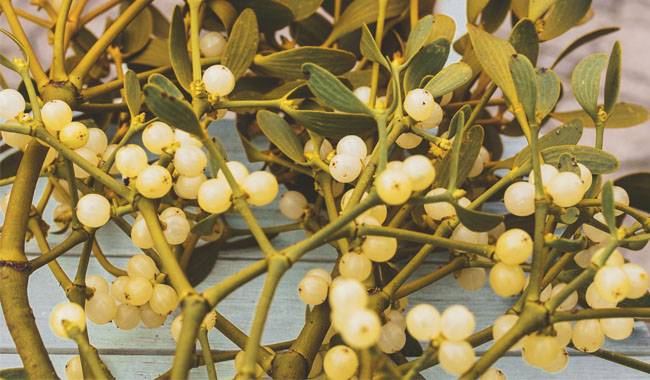
If folk remedies don’t help, you can turn to chemicals, but insecticides are not recommended – look for biological Aphids first – they may help. With biological products, remember that this is also a “chemical” so you should wear protective gloves and a respirator and do these treatments in sunny, cool but windless weather.
Biological agents are made from bacterial spores as well as various fungal parts and even elements of viruses. Once they enter the Aphids’ organism through the sap-sucking probes, they paralyze and sometimes completely destroy the Aphids’ intestines; the Aphids die.
As an example, the agents preferred by gardeners are biocides. However, keep in mind that the use of these products also requires careful reading of the instructions on the package; under no circumstances should you exceed the dose or save money; otherwise you will not get the desired results from using them.
If you have too many Aphids on your currants and you cannot fight them with simple preparations, you can use insecticides, which are usually serious chemicals, so you must wear protective gear, find out the distance to the nearest apiary, and stocking lake or river, and start the treatment strictly on a windless day, preferably in the early morning or late afternoon.
Remember that in such cases it is better to use products approved for use rather than old products “lying” on the shelf. The first treatment should be applied at the bud opening stage (if the currant plantation was heavily infested with Aphids last season) and the second treatment should be applied after harvest (if Gall mosquitoes were rampant that year). But of course, everything depends on the preparation – read the instructions and maybe the preparation allows you to do the treatment at another time.
PREVENTION OF APHIDS
Finally, let’s talk about preventing Aphids because as with any disease and pest, it’s better to keep them off your plot than to spend energy evicting unwanted visitors.
Preventive treatments are best started early in the spring, before flowering, even before the buds of the currants swell, and you can continue in late fall (November) after all the leaves of the plant have fallen off. Quite effective is the treatment, at this time of year, and the plants and bites are part of the drug Nitrogen.
Nitrogen is very effective against ovipositors but can cause damage to the leaves, especially the flowers. Usually use a 4% solution of the drug, diluted 4 ml in a bucket of water. If a sprayer is used, this amount is enough for 20 adult currant trees or 40 young currant bushes.
Don’t forget folk precautions – plant marigolds around the site and plant chamomile.
Be sure to do weed control once a week, starting in May and ending in mid-September. Remember that carriers of pests, i.e. Aphids, are a “vacation home” presence, which should never appear in your garden.




